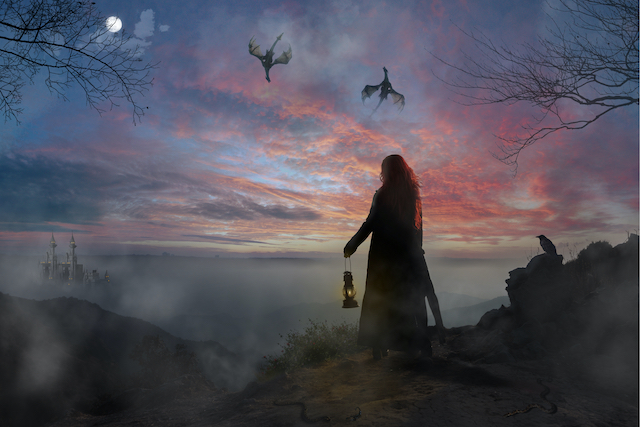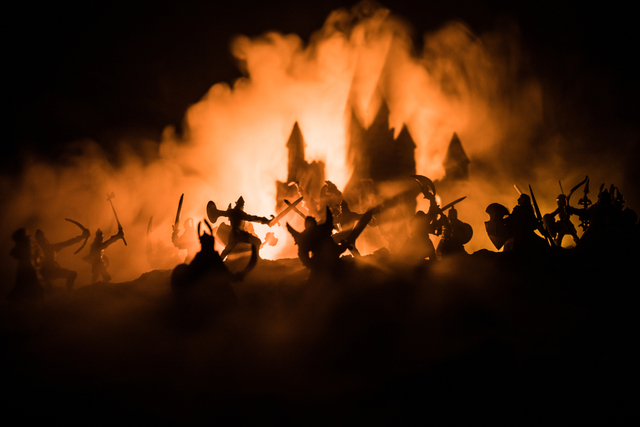
Young adult fiction. It’s created some of our biggest cultural moments (The Hunger Games, Queenie, The Fault In Our Stars and The Hate U Give to name a few), and yet in some circles it’s still given a lesser status than other genres.
One reason for this might be the idea of the trope. A seemingly normal girl discovers a hidden strength and topples a dictatorship (and finds love along the way!). A boy is living a quiet life filled with school, angst, and a niggling feeling that he’s somehow different. Then he discovers he’s the chosen one.
One of the most trope-laden areas of YA fiction is in fantasy, and that’s where we’re focussing today.
If you Google "YA fantasy tropes," you’ll find hundreds of articles with words like "overused" and "hate to love" in their titles. While all’s fair in love triangles and war, I think there might be another way to look at it.
Let’s take a look at four "overused" tropes and why they’re not so bad after all.
1. The Chosen One
The fate of the world is in the balance, and no one can work out how to save it. Until that one normal teenager comes along at just the right time.
Improbable? Maybe. But that’s what makes these characters so important. Everyone needs a chosen one they can look up to. Someone that makes them feel that they could make a difference.
As a writer, you get to view this improbability as a challenge. How can you take your reader from believing that the protagonist is unremarkable to believing that they have what it takes to topple a regime or defeat a dark lord?
Your job is to come up with experiences for your character that lead to those heroic traits emerging. Your plot becomes a series of puzzle pieces that slot together to create a convincing human being.
Were you always picked last for the football team? Maybe your character is left without a sword-fighting partner (and of course, they’ll need those skills later). Did you rebel against your parents’ curfew rules? Where (or to what) does that rebellious spirit lead your character?
With the "chosen one" trope, you have the ability to choose who that "one" is. When you’re writing your chosen one, think about why they are chosen.
You have the opportunity to highlight traits that aren’t usually portrayed as heroic, but that many of us have. You could provide representation for those young adults that don’t yet have a "chosen one" to look up to.

2. Factions
When I read Divergent for the first time, the factions seemed a little reductive. How could you sort thousands of people into five emotion-based categories?
Now, I know that Divergent is more of a sci-fi/dystopia, but run with me here. In case you haven’t read it, Veronica Roth split her society into five "factions:"
- Abnegation (selfless)
- Erudite (intellectual)
- Dauntless (brave)
- Candor (honest)
- Amity (peaceful)
I’m sure none of us feel like we can be one of these things all of the time. But the factions say something about what the society wants to achieve and how they want to be perceived.
From our perspective as writers, it can make for a pretty nifty logline. Watch how the trailer for the film version sums up the central premise in the first few lines:
Much of the critique of this trope is that it oversimplifies things. But if everyone can be split into these categories via a test, then on the surface, the opposing, less desirable traits are hidden away.
If you want to split your world’s population, think about what your society might want to hide rather than what they want to highlight. Maybe your characters are split into kingdoms or tribes based on their values. Maybe some have magic, and some don’t. Build these binaries into your novel to help you explore the gray areas in between.
When you approach it from this angle, the factions trope is less reductive and more revealing (without giving the game away too quickly).
3. The Love Triangle
Page-turning intrigue or needless distraction? What love triangles bring to YA fiction is always up for debate.
They usually allow the author to play with feelings of jealousy, competition, and with a need to soul-search. More often than not, the choices a protagonist makes romantically come to symbolize something in their personal journey.
I’m not going to discourage you from weaving a love triangle into your story. But think about what choice you’re trying to represent, and whether that choice could be represented in a different way. How does the romance serve the plot, or the development of your protagonist?
If you’re set on a battle of the hearts, think about how you can make it unexpected. Here are a couple of love triangle clichés to work with—or against:
- The Betty and Veronica: the mysterious, sexy one and the girl/boy next door
- The powerful and the power-less: one partner has magic (or insert-trait-here), the other doesn’t
- The sibling triangle: two siblings share the same love interest
- The vampire and the werewolf: the two options are from different tribes or factions
Maybe you take these two opposing choices and remove the love element—the protagonist chooses the girl next door and then quickly realizes that she and everything she represents aren’t quite what they seem. Maybe the love interest without powers allows you to introduce a more complex opposition (they don’t have the same power as the protagonist, but they have a different, hidden power).
Use the two opposing points on your triangle to create and then destroy the idea that the world your protagonist finds themselves in can be split down the middle.
4. The Rebellion
So your chosen one is defying their faction and bringing down the whole system all together. Or, an evil force is trying to take over and your chosen one unites the factions to stop them.
Every novel needs a central conflict, and with fantasy that usually means actual conflict in the form of a war or battle.
Engaging with the rebellion trope requires you to consider several things:
- Who/what is in power?
- Who are the rebels?
- What is the fundamental difference between the two?
If you’re going to write that epic war scene you’ve always dreamed of, you need an epic disagreement. This could be spiritual, moral, or material.

Typically, this disagreement will build and reveal itself throughout your novel or series culminating in a battle that the protagonist’s side will win.
This structure has led to some of the most satisfying young adult fantasy storylines, and readers are most likely never going to get tired of it. But what if...
- The battle is at the beginning, and the protagonist doesn’t win?
- The battle is in the middle, and the protagonist wins, only to realize that winning leads to more trouble?
- The protagonist was fighting for the wrong side the whole time?
All of these ideas have been done before, but thinking about your plot, characterization, and story arc from outside of the win/lose opposition could lead you in interesting directions.
Most of the tropes you’ll find in YA fantasy (and sci-fi) depend on binaries. Look for the gray, in-between spaces to find out what will make your story different.
What are your favorite (or least favorite) tropes? Share this article on Twitter or Facebook and let us know.


